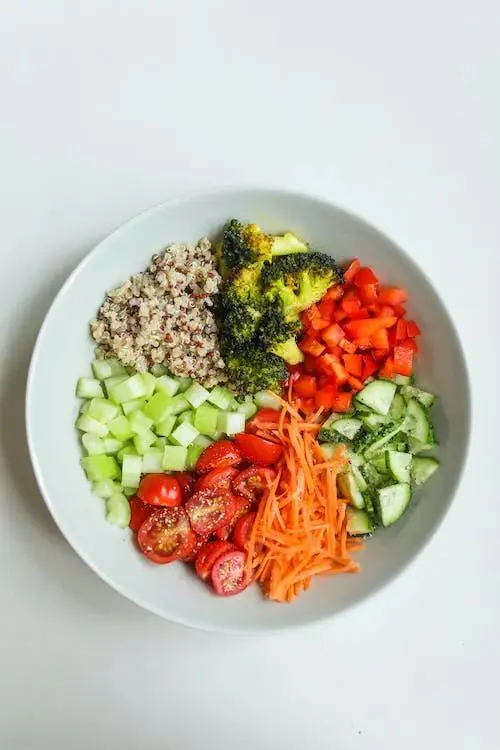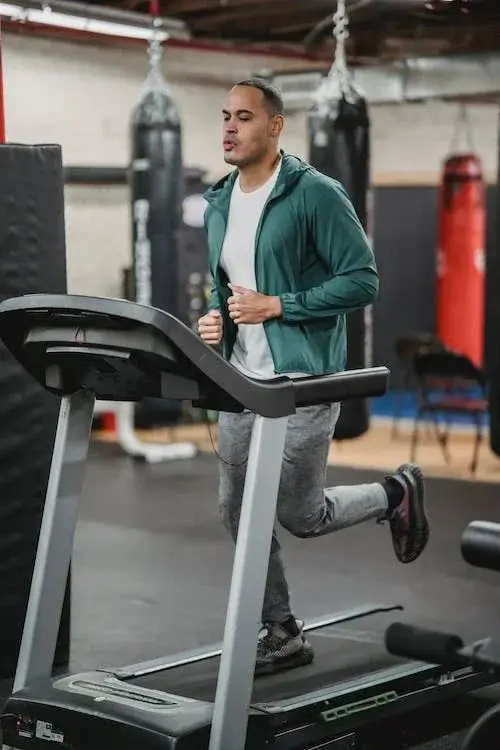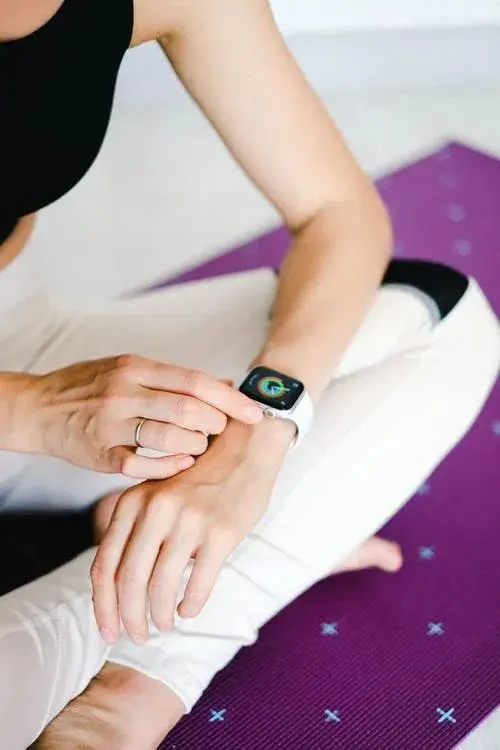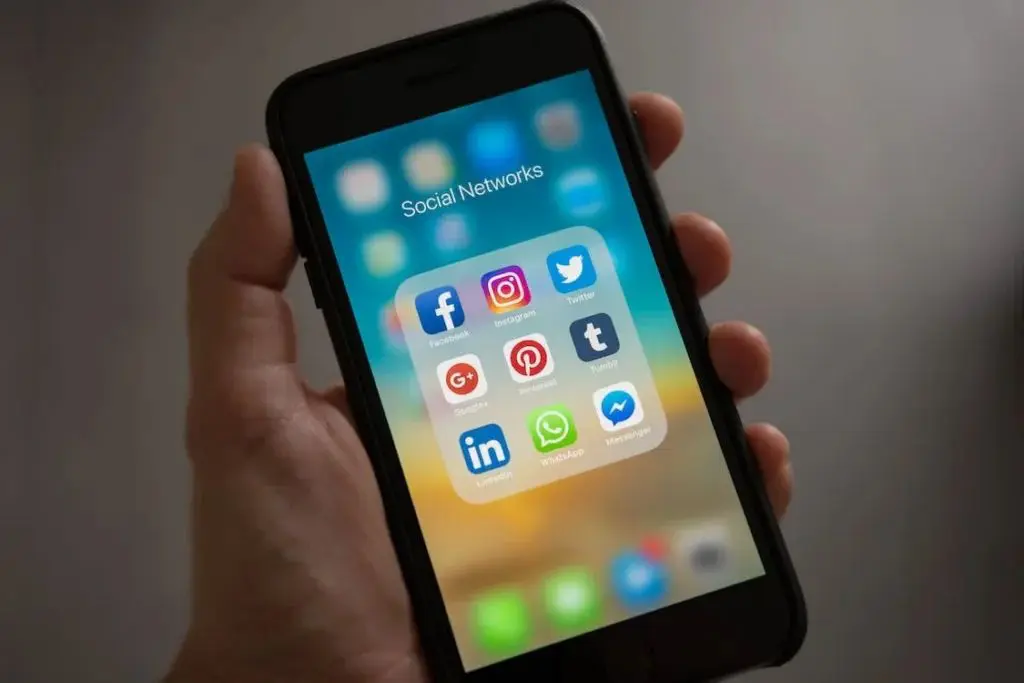Fitness and Wellness are a priority for many people around the world. However, previously it was not relatively as easy to stay fit as we were faced with fewer opportunities to find the perfect trainer. But as the fitness industry underwent digitalization, maintaining a fitness routine became more accessible and convenient for people. Among fitness programs available today are numerous application types that everyone can access. It’s not surprising that many businesses are interested in creating fitness apps. In this blog, you will learn how to create a fitness app that is the best in the market.

Workout and Fitness App Development
Fitness equates with athletic strength and mental sanity. Many people begin exercising in excitement or in hopes of improving their bodies. Many quickly abandon the idea to the extent they don’t see an instant result. Unfortunately, many people do not understand how to track their performance and progress. Technology like fitness and workout apps can solve these issues. Fitness apps enable users to monitor their fitness performance and display their changes at any time. Sporting giants Nike, Adidas, and Under Armour are developing fitness applications.
Through fitness apps, the user has an easy-to-read list of exercises performed in the gym. In some applications, intelligent devices can collect much more info about users’ daily activities and use them to produce a perfect fitness plan for them. Users can track their weight on a smart scale. Applications such as Samsung Health and Huawei Health have gained widespread support among athletes and everyday users.
Types of Fitness Apps
To develop fitness apps, you have to learn basic knowledge. Before determining what fitness app features should comprise, it is best to determine what types of fitness apps exist in the market that target individual needs. There are different fitness apps, such as diet and fitness apps, activity tracker applications, or Workout applications. Read the list below for different types of fitness apps.
- Diet and nutrition apps
- Workout Apps
- Activity tracking apps
- Food Tracking & Meal Planning App
- Yoga Apps
1) Diet and nutrition apps
Usually, a diet or nutrition app functions as a monitoring app to track a user’s food consumption habits or other specific activities. Users can also log how many calories they consume and track the calories contained in their foods. The app also lets users track the water supply in their system. One feature that may benefit these types of apps is adding a barcode scanner to provide nutritional information for food.

2) Workout Apps
Fitness apps are excellent tools for users to watch workout videos and programs at home. The workout app can also target specific workouts – such as HIIT or Pilates. Many workout exercise apps offer a paid plan where videos are uploaded every week for their guidance. Alternatively, there are also features that allow users access to a live fitness session.

3) Activity tracking apps
An Activity Tracking app helps you monitor your activity level. The app allows users to track physical activity and steps taken. The user can get a pretty accurate calculation about the calories burnt from exercise if they input their weight and height. These programs also allow for automatic monitoring of activities and often allow the user to enter the activity level manually.
4) Food Tracking & Meal Planning App
The food tracking app system is designed to track food consumption by logging calories, macros, micros, and other data. In certain apps, foods can be grouped according to their nutritional status, and users may be encouraged to eat green-colored meals or reduce red foods. It is a perfect app for taking care of your health.
5) Yoga Apps
Similar to previous categories, such an app offers a subscription with video and exercise plans. But these kinds of fitness apps focus mainly on yoga flows and exercises. These guided classes will help you to improve your body balance.

Key Features of a Fitness App
Various Fitness Apps offer different attributes with specific functionality unique to their clients. These apps are simple and user-friendly.
You have to consider your fitness application’s features. Creating a digital product is an easy and inexpensive process. These tools will let you assess what products are helpful to clients or how to improve them in the future. Read below some basic features of a fitness app.
- Sign up and log in
- User Profile
- User Activity Tracking
- Connectivity of Third-Party Devices
- Notifications & Reminders
1) Sign Up and Log In
Upon registration in a fitness app, the user can create a profile and connect it with their Facebook, Twitter, Instagram, or e-mail. With this, a user saves their information in the app.
2) User Profile
Creating a personal account helps to collect technical information like age, gender, weight, and height. This feature allows app developers to provide better-fit plans and better workout results.

3) User Activity Tracking
The user activity tracking function provides an easier way for people to determine their fitness requirements. Tracking technology can be used as a means of translating a user’s fitness journey into a new fitness goal. With this feature, the user can set out different paths for walking, running, or cycling. They can see distances from their walks using the map on the app. This information can help track your progress. Moreover, it also helps with motivation.
4) Connectivity of Third-Party Devices
Your fitness apps must be compatible with as much tracker software as possible. Wearable products and mobile devices allow fitness app developers to collect and keep important information about their heart rate, calorie burning and types of exercise, and duration of exercise.

5) Notifications & Reminders
Users must receive reminders when they reach fitness goals or anything related to their diet. Nonetheless, the timing of the notification should also be adjusted for the frequency. This keeps your user updated and active on the app.
10 Easy Steps for Developing a Fitness App
How do I create a fitness application from scratch? To create fitness applications, learning about software development life cycles is essential. In the case of a fitness application, these cycles do not differ significantly from others. Read this guide below to learn how to create a fitness app in 10 easy steps.
- Step 1: Explore the Market
- Step 2: Select a Type
- Step 3: Choose the MVP Features
- Step 4: Create a Budget
- Step 5: Hire Professionals
- Step 6: Technical Documentation
- Step 7: App Development and Design
- Step 8: Prototyping & MVP
- Step 9: Pick a Monetization Model
- Step 10: Launch
Step 1- Explore the Market
Before we develop your fitness app, it will be helpful for you to determine exactly what is happening in the market. The fitness app industry is expected to be worth $14.7 billion by 2020, with an estimated CAGR of 23% over the forecast period. According to statistics, sales in the fitness segment are expected to reach 4,024.7 million US dollars in 2021 alone, which is increasing rapidly. The fitness app market continues to grow and will increase as new health and fitness features develop. Therefore, you need to look out for the highest in-demand features.
Step 2- Select a Type
As we mentioned, different fitness apps are used these days, and you have to choose a category you want for yours. You need to determine which audience you want to target, and according to that, you will choose a type such as a diet and nutrition app or workout app, etc.
Step 3- Choose the MVP Features
Time to decide the best suitable and promising features in the app that will differentiate it. You have to consider your fitness application’s features. Creating a digital product is an easy and inexpensive process. MVP means a minimal viable product that must be developed before your app’s initial launch. All the features you decide on will be part of an MVP first. These tools will let you assess what products are helpful to clients or how to improve them in the future.
Read more about: A Complete Guide on How to Build an MVP
Step 4- Create a Budget
Now the most hectic task is deciding on a budget and allocating costs to different expenses associated with your fitness app development. What are the costs of coding fitness apps? For an exercise app, you need at least $74,350 on iOS and Android platforms and $154,580 for both platforms. Now obviously, the costs vary depending upon the features and type you want to choose for your app, but its efficient budget planning can permanently save you some money on the app.
Step 5- Hire Professionals
Time to get the real work started. A clear choice in hiring a professional software team will be a team with experience in developing applications and generating client feedback. It can be used to develop high-performance apps and solve problem areas.

Learn about: How to Build an Effective Product Design Team in 2022 | ENOU
Step 6- Technical Documentation
While making a fitness and wellness application, you must also take care of technical documentation such as SRS (Software Requirements Specification). A specialized technical writer can be hired to create this technical documentation. This documentation incorporates use cases, stages, and required data for the fitness application developers to develop the app.
Step 7- App Development and Design
The central part of creating a fitness app for Android and iOS clients requires software developers willing to spend significant time in these working frameworks. Remember that business advancement ought to work connected by carefully planning the prerequisites of your software product, improvement of UI/UX, front end and back end, quality testing to the arrangement of your application, and backing. During this stage, you will work on incorporating valuable improvements, forming a UX/UI plan, and creating your application’s visual design to provide you with a good vision of the finished result.
Read also: 18 Tools to Measure, Quantify and Optimize the UX in 2022
Quality Assurance also happens in this step through testing and bug fixing. Testing is performed on different gadgets. You will want to perceive how your application functions and how the audience will perceive it.
Step 8- Prototyping & MVP
In previous steps, you would have already decided on the model with the basic features of your app. Now comes the time to implement this model via prototyping and building an MVP. At this stage, you will gain as much feedback as possible about your app and visualize how your audience perceives it. After this, you will make a list of factors that must be reconsidered or added to the final version of your app.
Learn more about: What Is Prototyping? Its Reasons, Types, and More
Step 9- Pick a Monetization Model
After that, you need to pick a monetization model to help you later to ensure your fitness applications produce positive rewards. Paid app users need to pay a fee to get a workout on your app first. That is where you decide how you will earn revenue from your product.
Note: By adding a free trial option, users can pay for the app.
Step 10- Launch
As we finish the rest of the stages, we will safely launch our new fitness app on the market. In the initial days of launching, it’s best to give free promotions, discounts, or trials to gain a healthy customer base. After that, you will earn a good ROI on your fitness app. Make sure you differentiate your fitness app from others via marketing and advertising.
10 Additional Features You Must Add to Your Fitness App
How will my fitness apps look and function? What features should I add for it to stand out? Well, ideally, your MVP gives you an idea of some functionality of your app. We suggest adding these MVP features as an option for your first fitness application. Check the list below for the best features you could add to your fitness app.
- Live Streaming
- Barcode Scanner
- Community & Leaderboards
- Coach- on Demand
- Integration with Wearable Devices
- Inscription
- Fitness Database
- Social Media Integration
- Gamification
- Goal Setting
- Educational Content
Live Streaming
Users should view video clips to learn more about fitness techniques. Different options can be taken for this, and you can earn revenue by marketing products in these videos. In this feature, the coach will arrange group training where the user connects to the session and repeats the exercise with the coach. This technique allows people to get together with devoted fitness enthusiasts. They can discuss fitness techniques together. Other options could include the creation of fitness apps with video training.

Barcode Scanner
Filling a diet app with products is a disadvantage. If you find too many things on the site, it may take more time for your users to navigate, and they might lose attention. Users won’t wait too long, and creating additional solutions to develop fitness apps is necessary. Users can add products to daily rations by adding a feature like barcode scanners according to their will. The feature makes sense because it not only detects and shows the manufacturer what customers want, users can find a complete list of all meals within seconds. Machine learning algorithms may be applied to the products without bar codes for vegetables and fruits.
Community & Leaderboards
Users should receive rewards in some way for their participation during training on the app. The players with the highest points should have a community leaderboard where they can compare their progress with others. You may reward customers by giving them a badge or monthly membership.
Coach- on Demand
Other than group training, users may arrange personal coaching sessions for an additional fee. In this Livestream, users will learn about new exercises and adjust training plans alongside coaches. It is even possible to book coaches over more extended periods through the app. This way, the coaching staff can manage their clients better.
Integration with Wearable Devices
Smartphone devices such as fitness monitors give you statistics about the apps you have on them. Additionally, there is potential to develop future fitness apps for wearables. The app features must be used on smartphones or smartwatches.

Inscription
In most applications, registration has a vital function to perform. The requirement may be voluntary, but you should make it easy for users to log in. However, you can consistently offer special courses or meal programs, so customers enjoy logging in. Registering allows you to collect a lot of information and personalize the experience.
Detail statistics are helpful to people who can’t read the data but can’t see the changes. It’s possible to create a fitness app that displays stats in graph form instead of text. Visualizations help improve analysis during post-training. Contact Hapy to find out what functionality you want in your app.
Fitness Database
Without mentioning the app type, there should be an essential fitness database. You should provide users with an option to customize rationing for their diet app. When they cannot find specific meal options on your website, they will most likely quit and try alternative recipes. The same is true with fitness apps. App developers should give users a range of workout options that explain how they affect their bodies if used correctly and explain how many calories they burn. The requirement is to use an extensive exercise database to make it easier and faster for the users to build various training plans.
Social Media Integration
The addition of Facebook features in the app allows the app to promote its services for free and is an additional way for you to earn revenue. It is also essential to ensure that your app has a Facebook or other website for users to understand the app and generate engagement quickly. This functionality should also be considered to ensure optimum health outcomes for mobile users. These features should help you keep your fitness apps functional longer.

Gamification
This feature increases user motivation by preventing them from deleting their apps. Rewards, badges, and competitive aspects provide users with solid motivation for completing their objectives and staying motivated. You may need an incentive or contest to engage users in sports in a game app. Make fitness apps for athletes that provide competitive league games for their audience. In varying stages, they may compete in an advanced league.
Goal Setting
A vital aspect of an exercise app is to define goals. It helps motivate users by providing a goal tracker, which assists in accomplishing goals. Your app’s integration with wearable devices makes it much easier for users to track their goals.
Educational Content
Useful fitness apps also provide helpful training material on exercises, such as exercise videos and fitness training guides or inspiring stories of fitness-conscious people. This is another strategy that helps users keep engaged.
What Is the Function of Nutritional Tracking?
Without an adequate diet, the entire physical activity is virtually useless. A nutritional tracking feature in your fitness app helps users track the number of calories they eat. It lets users record how many microelements they consume each day. The top two diet applications with such features are MyFitnessPal and LifeStop. It provides exceptional user interfaces and seamless navigation. They may also integrate third-party applications to accurately estimate calories and adapt their diets for specific activity levels.
How Much Does It Cost to Create a Fitness App & Workout App?
The cost of creating a fitness app depends on your methods: whether you outsource the project or hire professionals as a part of your team to create it. In any way, the minimum cost incurred on creating a fitness app could be equal to $15000 or as high as $25000. You need a big budget for a high-quality and futuristic fitness app, but for an essential MVP product, you can spend a minimum of $5000 on its development.
App Monetization Strategies
When you are done with all the steps of creating a fitness app, you think about its future in the market. How can my fitness app generate more income? We can learn the monetization methods that are popular these days to know how fitness apps can increase revenue. Here is a list of a few ways in which you can monetize your app:
- Make a subscription base model for your app.
- Include in-app purchases to keep your customers hooked to the app.
- Promotions and marketing of fitness-related products.
- Influencer marketing for fitness products.
Conclusion
The app development market continues to grow, and fitness apps are becoming popular. In times of COVID-19, many people shifted to digital solutions to manage their daily routines. Customers nowadays have started to feel it easier to use apps and digital programs in their daily lives rather than paying higher for on-site solutions. It is an excellent opportunity for startups to use these trends and grow their consumer base by providing them with quality digital apps.
As you learned from this blog about the simple and easy steps to create a fitness app, it is easier to build a successful app if you focus on our suggestions. Our recommendations for extra features will increase your chance of making quality software products. Nevertheless, Hapy is always here to solve your software-related problems and provide you with the best app development services. Our virtual CTO services are also helpful if you want to create an app yourself.
FAQs
Which Fitness Apps Are Earning Big Bucks?
The most used fitness apps these days are:
1. Calm: is essentially a meditation & mindfulness application. It’s the most fitness-less option in this category.
2. Peloton: allows users to train from home while retaining a competitive gym experience.
3. SWEAT: The successes of Kayla Itsines SWEAT fitness app are likely a thing many aspiring entrepreneurs have tried.
Can I Create a Fitness App Myself?
With the following steps, you can create a basic model of a fitness app yourself if you have a beginner’s knowledge of software development. Or you can always outsource the app’s development phase while taking charge of the rest of the steps yourself.
How to Create a Workout App With Smart Coach Features?
1. List some tips for improving your strength and conditioning levels instead of an actual coach.
2. Develop an optimum training plan. The personal coaching team typically handles the whole thing for the sportsperson’s needs. But, personal coach services often require a substantial fee. Therefore, an intelligent coach-like feature would be budget friendly for them, and they will be willing to pay for it.




